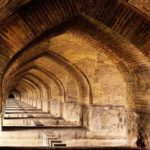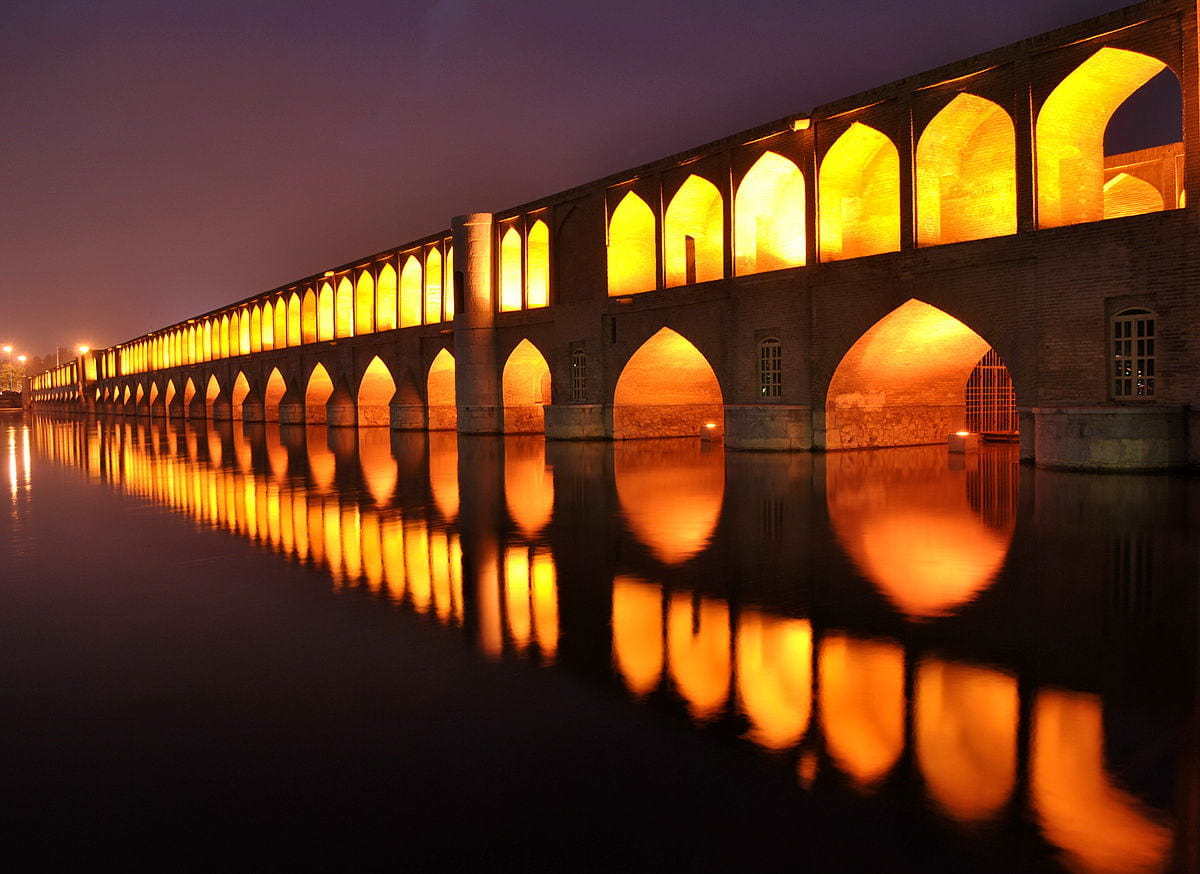Si-O-Se Pol Bridge
The Si-o-se pol bridge (33 bridge) is among the first buildings that the sovereign Safavid Shah Abbas I gave orders to build. It was built in the 1602 year on the Zayande-rud river. Initially this bridge was called the Jolfa bridge and later also the Allahverdi Khan bridge (named after the famous army general of Shah Abbas). Originally the bridge had 40 arches but today 33 arches remain and it is for this reason that it is called Si-o-se ("trentatré").
On the banks of the Zayande Rud near this bridge, during the Safavid period, the celebrations of the feast of Abrizan or Abrizagan took place (NDT: ancient Iranian festival in July that celebrated the rain after a long drought). In this festival, which was celebrated annually on the thirteenth day of the first summer month, the inhabitants rejoiced by spraying each other with water and rose water.
The beauty of this bridge has been praised in the travel diaries of the numerous travelers who visited Esfahan in the qajar era.
The upper part of the bridge is built of bricks while the lower floor is made of stone. This long 295 meters and wide 13,75 meters bridge connects Chaharbagh Abbasi and Chaharbagh-e Bala. A narrow covered passage has been built on each side of the bridge. There is a pedestrian walkway in the upper floor and another one covered in the lower floor, built in the middle of the central pillars of the bridge not far from the river bed.
This historic monument from 1932 is listed on the national monuments list.
[/ Su_column]





